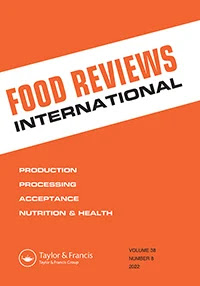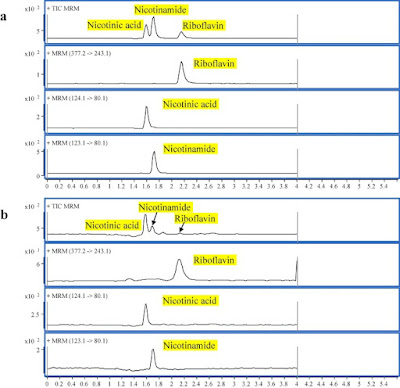Brown algae are ubiquitously distributed in the NW coastline of the Iberian Peninsula, where they stand as an underexploited resource. In this study, five solvents were applied to the extraction of pigments from nine brown algae, followed by their determination and quantification by HPLC-DAD. A total of 13 compounds were detected: Six were identified as chlorophylls, six were classified as xanthophylls, and one compound was reported as a carotene. Fucoxanthin was reported in all extracts, which is the most prominent pigment of these algae. Among them, L. saccharina and U. pinnatifida present the highest concentration of fucoxanthin (4.5–4.7 mg∙g−1 dry weight). Ethanol and acetone were revealed as the most efficient solvents for the extraction of pigments, showing a maximal value of 11.9 mg of total pigments per gram of dry alga obtained from the ethanolic extracts of H. elongata, followed by the acetonic extracts of L. ochroleuca. Indeed, ethanol was also revealed as the most efficient solvent according to its high extraction yield along all species evaluated. Our results supply insights into the pigment composition of brown algae, opening new perspectives on their commercial exploitation by food, pharmaceutical, and cosmeceutical industries.
Monday 31 January 2022
Monday 24 January 2022
Polyphenols: A first evidence in the synergism and bioactivities
Tuesday 18 January 2022
A dual-signal fluorescent sensor based on MoS2 and CdTe quantum dots for tetracycline detection in milk
Monday 17 January 2022
Chitosan and flavonoid glycosides are promising combination partners for enhanced inhibition of heterocyclic amine formation in roast beef
Food Chemistry, 375, 131859, 2022
Sunday 16 January 2022
Development, characterization and stability of a white cachama pâté-type product (Piaractus brachypomus)
Saturday 15 January 2022
Effects of different feeding regimes on muscle metabolism and its association with meat quality of Tibetan sheep
Friday 14 January 2022
Impact of chiral tebuconazole on the flavor components and color attributes of Merlot and Cabernet Sauvignon wines at the enantiomeric level
Food Chem. 373, Part B, 131577, 2022
Thursday 13 January 2022
Freezing characteristics and relative permittivity of rice flour gel in pulsed electric field assisted freezing
Food Chem. 373, Part A, 131449, 2022
Wednesday 12 January 2022
Cellular antioxidant potential and inhibition of foodborne pathogens by a sesquiterpene ilimaquinone in cold storaged ground chicken and under temperature-abuse condition
Food Chem. 373, Part A, 131392, 2022
A sesquiterpene quinone, ilimaquinone, was accessed for its cellular antioxidant efficacy and possible antimicrobial mechanism of action against foodborne pathogens (Staphylococcus aureus and Escherichia coli) in vitro and in vivo. Ilimaquinone was found to be protective against H2O2-induced oxidative stress as validated by the reduction in the ROS levels, including increasing expression of SOD1 and SOD2 enzymes. Furthermore, ilimaquinone evoked MIC against S. aureus and E. coli within the range of 125–250 µg/mL. Ilimaquinone established its antimicrobial mode of action against both tested pathogens as evident by bacterial membrane depolarization, loss of nuclear genetic material, potassium ion, and release of extracellular ATP, as well as compromised membrane permeabilization and cellular component damage. Also, ilimaquinone showed no teratogenic effect against zebrafish, suggesting its nontoxic nature. Moreover, ilimaquinone significantly reduced the S. aureus count without affecting the sensory properties and color values of cold-storaged ground chicken meat even under temperature abuse condition.
Tuesday 11 January 2022
Stability and antioxidant capacity of epigallocatechin gallate in Dulbecco's modified eagle medium
Monday 10 January 2022
Assessment of the Ecological Risk from Heavy Metals in the Surface Sediment of River Surma, Bangladesh: Coupled Approach of Monte Carlo Simulation and Multi-Component Statistical Analysis
River sediment can be used to measure the pollution level in natural water, as it serves as one of the vital environmental indicators. This study aims to assess heavy metal pollution namely Copper (Cu), Iron (Fe), Manganese (Mn), Zinc (Zn), Nickel (Ni), Lead (Pb), and Cadmium (Cd) in Surma River. Further, it compares potential ecological risk index values using Hakanson Risk Index (RI) and Monte Carlo Simulation (MCS) approach to evaluate the environmental risks caused by these heavy metals. in the study area. With obtained results, enrichment of individual heavy metals in the study area was found in the order of Ni > Pb > Cd > Mn > Cu > Zn. Also, variance in MCS index contributed by studied metals was in the order of Cd > Pb > Ni > Zn > Cu. None of the heavy metals, except Ni, showed moderate contamination of the sediment. Risk index values from RI and MCS provide valuable insights in the contamination profile of the river, indicating the studied river is currently under low ecological risk for the studied heavy metals. This study can be utilized to assess the susceptibility of the river sediment to heavy metal pollution near an urban core, and to have a better understanding of the contamination profile of a river.
Sunday 9 January 2022
Valorization of kiwi agricultural waste and industry by-products by recovering bioactive compounds and applications as food additives: A circular economy model
Saturday 8 January 2022
Weed pressure determines the chemical profile of wheat (Triticum aestivum L.) and its allelochemicals potential
Pest Management Science, 78, 1605-1619, 2022
BACKGROUND
Common purslane (Portulaca oleracea) and annual ryegrass (Lolium rigidum) are important infesting weeds of field crops. Herbicides are mostly used for weed suppression, while their environmental toxicity and resistance in weeds against them demand considering alternative options, such as the use of allelopathic crops for weed management. Wheat is an important allelopathic crop and present research focused on the identification and quantification of benzoxazinoids (BXZs) and polyphenols (phenolic acids and flavonoids) of the wheat accession ‘Ursita’ and to screen its allelopathic impact on P. oleracea and Lolium rigidum through equal-compartment-agar (ECA) method.
RESULTS
Weed germination, radicle length, biomass and photosynthetic pigments were altered following co-growth of weeds with Ursita for 10-day. Root exudates from Ursita reduced (29–60%) the seedling growth and photosynthetic pigments of Lolium rigidum depending on co-culture conditions of planting density. Weed pressure caused significant increase in the production of phenolic acids (vanillic, ferulic, syringic and p-coumaric acids) and root exudation of BXZs, in particular benzoxazolin-2-one (BOA), 2-hydroxy-7-methoxy-1,4-benzoxazin-3-one (HMBOA), 2-hydroxy-1,4-benzoxazin3-one (HBOA) and 2,4-dihydroxy-1,4-benzoxazin-3-one (DIBOA) in wheat tissues (shoots, roots) and exudate in root rhizosphere agar medium in response to co-cultivation with Lolium rigidum and P. oleracea, depending on weed/crop density.
CONCLUSION
The work revealed that Ursita is allelopathic in nature and can be used in breeding programs to enhance its allelopathic activity. Meanwhile, there are opportunities to explore allelopathic effect of wheat cultivars to control P. oleracea and Lolium rigidum under field conditions. © 2022 The Authors. Pest Management Science published by John Wiley & Sons Ltd on behalf of Society of Chemical Industry.
Friday 7 January 2022
Effects of Polyphenols on Oxidative Stress, Inflammation, and Interconnected Pathways during Spinal Cord Injury
Oxidative Medicine and Cellular Longevity, 2022, 8100195
Thursday 6 January 2022
Benefits, toxicity and current market of cannabidiol in edibles
Critical Reviews in Food Science and Nutrition
The commercialization of products with cannabidiol (CBD) has undergone a significant increase. These products can be presented in different forms such as baked goods, gummies or beverages (such as kombucha, beer or teas, among others) using wide concentrations ranges. The use of CBD in edibles favors its consumption, for medicinal users, during the work week, avoid its possible social stigma and facilitates its transport. These products can be purchased on store shelves and online. There is a large number of specialized studies, in which the possible advantages of CBD consumption are described in the preclinical and clinical trials. It is also necessary to recognize the existence of other works revealing that the excessive consumption of CBD could have some repercussions on health. In this review, it is analyzed the composition and properties of Cannabis sativa L., the health benefits of cannabinoids (focusing on CBD), its consumption, its possible toxicological effects, a brief exposition of the extraction process, and a collection of different products that contain CBD in its composition.
Wednesday 5 January 2022
Coffee silverskin: Characterization of B-vitamins, macronutrients, minerals and phytosterols
The present study assessed the nutritional composition of coffee silverskin (CSS) obtained from arabica roasted coffee. Following validated analytical methods, CSS resulted to be a high source of proteins (14.2 g/100 g) and dietary fibers (51.5 g/100 g). Moreover, the mineral analysis revealed high contents of calcium (1.1 g/100 g) and potassium (1.0 g/100 g). To date, this study provided the widest mineral profile of CSS with 30 minerals targeted including 23 microminerals with high levels of iron (238.0 mg/kg), manganese (46.7 mg/kg), copper (37.9 mg/kg), and zinc (31.9 mg/kg). Moreover, vitamins B2 (0.18–0.2 mg/kg) and B3 (2.5–3.1 mg/kg) were studied and reported for the first time in CSS. β-sitosterol (77.1 mg/kg), campesterol, stigmasterol, and Δ5-avenasterol, were also observed from the phytosterol analysis of CSS with a total level of 98.4 mg/kg. This rich nutritional profile highlights the potential values of CSS for innovative reuses in bioactive ingredients development.




















